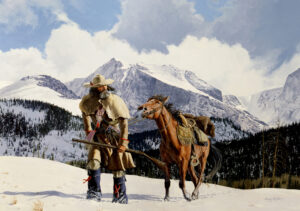Stunning photos dominate these coffee table tomes
The Civil War sesquicentennial has spawned a new—and not-so-new—wave of literature designed to introduce a new generation to the nation’s seminal conflict. Among the first such books are three profusely illustrated volumes that contain far too much information to be dismissed as mere “coffee table books.” 
Topping the list is Discovering the Civil War, by the National Archives Experience’s “Discovering the Civil War” Exhibition Team (The Foundation of the National Archives, Washington, D.C., 2011, $29.95). Based on the National Archives’ wonderful exhibit of photographs and documents culled from its vast trove of Union and Confederate ephemera, this book chronicles the war through a plethora of firsthand material, some of which is familiar to all but the neophyte, but much of which is not. Not only might this book live up to its name among new students of the war, but it offers fresh insights to interest the longtime buffs as well.
Webb Garrison’s Brady’s Civil War: A Collection of Memorable Civil War Images Photographed by Mathew Brady and His Assistants (Lyons Press, 2011, $24.95), first published in 2000, provides a collection of more than 275 photos by Brady and his famed collaborators such as Alexander Gardner and Timothy O’Sullivan, who eventually branched out on their own. While the photos are as timelessly compelling as ever and there is a new introduction by military expert Alan Axelrod, I do fault this “Revised Edition” for not revising the caption on the well-known photograph of a dead Confederate soldier in Gettysburg’s Devil’s Den to reflect the fact that O’Sullivan had rigged the photo’s setting.
The Big Book of Civil War Sites (Morris Book Publishing, 2011, $27.95), meanwhile, is also somewhat sloppy. Intended as a comprehensive guide to travelers touring the various sectors of the war, it touts itself as “the definitive travel reference for America’s most famous, and hallowed, Civil War battle sites,” including as it does the Western Theater (i.e., the Mississippi and Georgia campaigns) as well as the better-publicized East. And yet for all that, the book still falls short. It includes Florida, whose biggest battle was at Olustee, but it omits the more critical state of Kentucky (where the Battle of Perryville was fought), and completely omits the Trans-Mississippi Theater, encompassing every site from Pea Ridge in Arkansas to Picacho Pass in Arizona (no doubt Texans, Missourians and members of the Five Civilized Tribes of what is now Oklahoma, among others, will feel rather slighted). While the book covers a fair amount of ground, it still makes a limited primer for the Civil War tourist.




